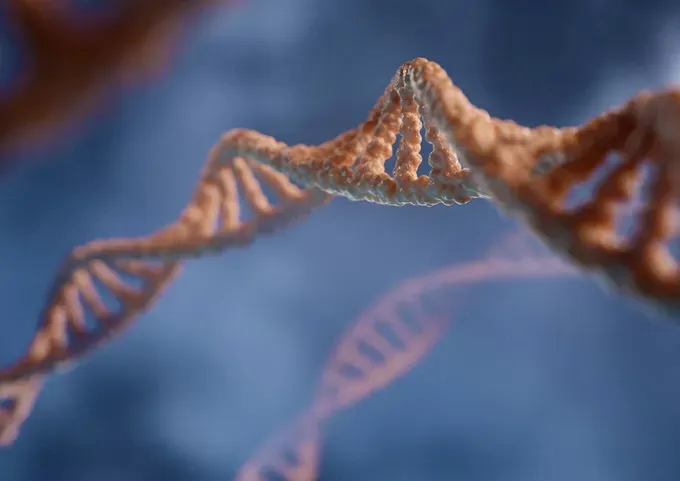Understanding A Notochord
What Is a Notochord? Understanding Its Developmental Role
Understanding Notochord

The notochord serves as the foundation of the early embryo, playing a critical role in directing the development of surrounding tissues and organs. It acts as a temporary structure, guiding the formation of the nerve cord and influencing the structural aspects of notochord biology. With its inner layer derived from the endoderm and outer layer from the mesoderm through cell division, the notochord sets the stage for the intricate process of vertebrate embryogenesis.
"embryogenesis:
What is Notochord?
The notochord, a crucial structure in developing vertebrates, is a single-cell layer situated between the endoderm and neural plate. It plays a vital role in providing primary axial support for the embryo during early development. Essential in the early embryonic stages, notochord cells are responsible for notochord formation.
Importance of Notochord in Child Development
The developmental impact of the notochord on the nervous system is crucial, regulating the formation of the vertebral column and playing a vital role in the central nervous system's development. Additionally, the notochord serves as the embryonic origin of the intervertebral disc's nucleus pulposus, while also influencing the formation of blood vessels and the basement membrane. These functions highlight the structural aspects of notochord biology and its significance in early childhood development.
Development Stages of Notochord

The notochord begins as a rod-like structure and serves as the defining feature of all chordates. It starts as a solid rod of cells that forms from the mesoderm, the middle germ layer. The cells then undergo division, with the inner layer cells increasing in size and the outer layer cells flattening. These structural aspects of notochord biology are essential for its function as a key midline structure in early embryonic development.
Formation and Structure of Notochord
Formation and Structure of Notochord:
Mesodermal cells undergo notochord formation during prenatal development, providing early midline signals for the growing embryo. Arising from the dorsal organizer, the notochord ensures proper embryological development. The process involves the essential role of the yolk sac endoderm layer. Additionally, the notochord structure serves as the major structural element of the developing embryo, highlighting its crucial role in the structural aspects of notochord biology.
Key Markers in Notochord Development
Early notochord development involves the regulation of membrane contact sites, playing a vital role in shaping the nervous system. In zebrafish notochord biogenesis, phylum chordata members are essential for notochord development. Human pluripotent stem cells facilitate notochord development through a facile method, contributing to the structural aspects of notochord biology. The inner layer formation and cell division are tightly regulated, involving key developmental markers. These markers influence the outer layer of the notochord, impacting its function and overall development.
Impact of Notochord on the Nervous System

The notochord plays a crucial role in the development of the nervous system, influencing the formation and function of the nerve cord. Structural aspects of notochord biology contribute to the inner layer of the nerve cord. Cell division within the notochord impacts the outer layer, influencing the nervous system's development. The function of the notochord in supporting nervous system development has been studied extensively, as evidenced in free PMC articles.
Notochord Induction in the Nervous System
Contributing to the early development of the nervous system, notochord cells play a crucial role in forming the neural plate. As a source of midline signals, the notochord regulates the formation of the neural plate, impacting embryological studies and the vital process of neural tube formation. Understanding the structural aspects of notochord biology is essential for comprehending its function in nerve cord development. Cell division within the notochord influences the inner and outer layers, highlighting its significance in early childhood development.
Role of Notochord in Brain Development
The development of the embryonic nervous system hinges on the critical function of the notochord. It actively participates in the early formation of the neural tube, exerting a vital influence on the early development of the central nervous system. Serving as the structural support for the developing brain and spinal cord, the notochord plays a crucial role in the embryonic origin of the nervous system. These essential roles underscore the significance of the notochord in brain development, highlighting its integral contribution to early childhood neurological growth and maturation.
Link between Notochord and Gene Regulatory Networks

The notochord plays a crucial role in the gene regulatory networks that orchestrate early embryonic development, influencing the expression of key developmental genes. This interaction influences the structural aspects of notochord biology and its function, impacting the formation of the nerve cord. Researchers like Yeganeh M and Wierda K have delved into the molecular mechanisms underlying this relationship, shedding light on the interplay between the outer layer, inner layer, and cell division processes. Studies by Webb SE and Vervliet T have further emphasized the influence of the notochord on gene regulation, offering valuable insights into embryonic pattern formation. This intricate link serves as a foundation for understanding the broader impact of the notochord on embryonic development.
Influence of Notochord on Gene Regulation
In the early stages of embryonic development, the notochord plays a crucial role in regulating gene expression, influencing the development of important genes. Notochord cells provide essential midline signals for gene regulation, shaping the early nervous system. This impact on gene regulation is critical for the overall development of the nervous system, highlighting the significant function of the notochord in the structural aspects of notochord biology and inner layer cellular processes during embryogenesis.
Genetic Disorders Related to Notochord
Aberrant notochord formation can lead to genetic disorders, impacting the developing embryo. Understanding notochord biology is crucial for studying these disorders, as they are linked to various conditions. Genetic studies have revealed the connection between notochord abnormalities and several diseases. Notochord development abnormalities and their influence on the forming nerve cord highlight the importance of structural aspects of notochord biology. This knowledge sheds light on the inner and outer layers and the role they play in cell division.
Notochord and its Connection with Embryonic Pattern
The notochord plays a crucial role in the embryonic pattern. It functions as the primitive axial support, providing a foundation for the developing embryo. The structural aspects of notochord biology are intricately linked to the formation of the neural tube, also known as the nerve cord. During early development, the notochord's inner layer undergoes cell division, contributing to the establishment of the outer layer. This process is essential for shaping the embryonic pattern and laying the groundwork for future growth and differentiation.
Notochord's Role in Gastrulation
During gastrulation, the notochord plays a crucial role in shaping early embryo development. It influences the formation of the neural tube and contributes to the development of the central nervous system. The structural aspects of notochord biology are integral to the process, involving the inner and outer layers and cell division. This intricate dance of cellular processes is vital for the overall function of the notochord, demonstrating its importance in orchestrating early embryonic stages.
Impact on Late Endoderm Elongation
The elongation of the late endoderm layer is influenced by the notochord, playing a crucial role in embryo development. Signals from the developing notochord regulate endoderm elongation and impact the structural support of the endoderm layer. Late endodermal development is essential for embryo development, and it is significantly influenced by signals from the notochord, showcasing the intricate and vital function of the notochord in early childhood development.
Notochord and Spinal Development
Embryonically vital for spinal development, the notochord, a flexible rodlike structure, plays a crucial role in forming the vertebral column. As the source of midline signals, its development is fundamental in shaping the spinal cord. Responsible for the embryonic origin of the vertebral column, the notochord's function supports the structural aspects of notochord biology and inner layer signaling during cell division. This process is crucial for the nerve cord's growth and alignment, highlighting the significance of the notochord in early childhood development.
Notochord's Influence on the Vertebral Column
The essential role of the notochord in vertebral column formation cannot be overstated. It provides crucial structural support and signals for the development of the vertebral column during embryonic development. The notochord's influence is vital for spinal development, making its formation a crucial aspect of early childhood development. Understanding the structural aspects of notochord biology is essential for regulating membrane contact sites, ensuring proper development. This intricate process involves inner layer formation, cell division, and outer layer development, all of which play a significant role in this developmental stage.

Frequently Asked Questions
What is a notochord and what is its function?
The notochord, a flexible rod-like structure in chordate embryos, plays a crucial role in development. Acting as a signaling center, it aids in the formation of the nervous system and helps shape the body plan. Eventually, the notochord develops into the vertebral column.
How does the notochord develop in embryonic development?
During embryonic development, the notochord forms as a rod-like structure from mesodermal cells. Acting as a scaffold, it signals nearby cells to differentiate into specific tissues. Eventually, the notochord disappears as the spine develops and takes over its supportive role.
What is the difference between a notochord and a vertebral column?
The notochord and vertebral column serve different roles in the body. While the notochord provides support during early embryonic development, the vertebral column serves as the main structural support for the body. Unlike the notochord, which is present only during early development, the vertebral column is found in all adult vertebrates.
Conclusion
In conclusion, the notochord plays a crucial role in early childhood development. It serves as the foundation for the formation of the vertebral column, influences the development of the nervous system, and plays a role in gene regulation. Understanding the importance of the notochord can provide valuable insights into embryonic development and genetic disorders associated with its dysfunction. By studying the notochord, we can gain a deeper understanding of how our bodies develop and function. If you have any further questions about the notochord or its role in development, refer to the frequently asked questions section below.






































































































































